or adding display referred in Affinity Photo (PS) vs. scene referred in Nuke.
To show to a 2D or motion graphics artist who is only used to work with Photoshop and AfterEffects what it means to work scene referred instead of display referred I set up this simple example with Affinity Photo (Photoshop would be the same).
Take a fresh document and fill the background with a grey value of 80 out of the range of 0-255 (8-bit sRGB). Make a circle selection on the filled layer and copy&paste the grey circle on the grey background – nothing happens. To make the new layer visible change the transfer mode to ADD. Duplicate the circle layer two more times and end up with a clipped white. The overlaid circle areas adding up from 80 to 160, 240 and would end up at 320, but clip at 255. So far so good.

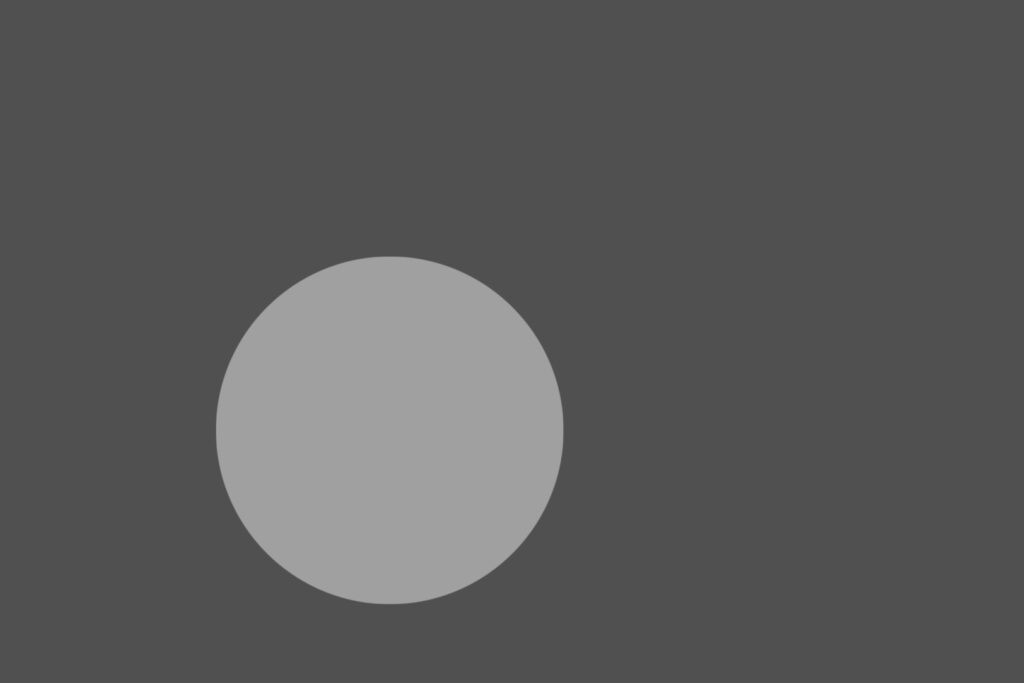
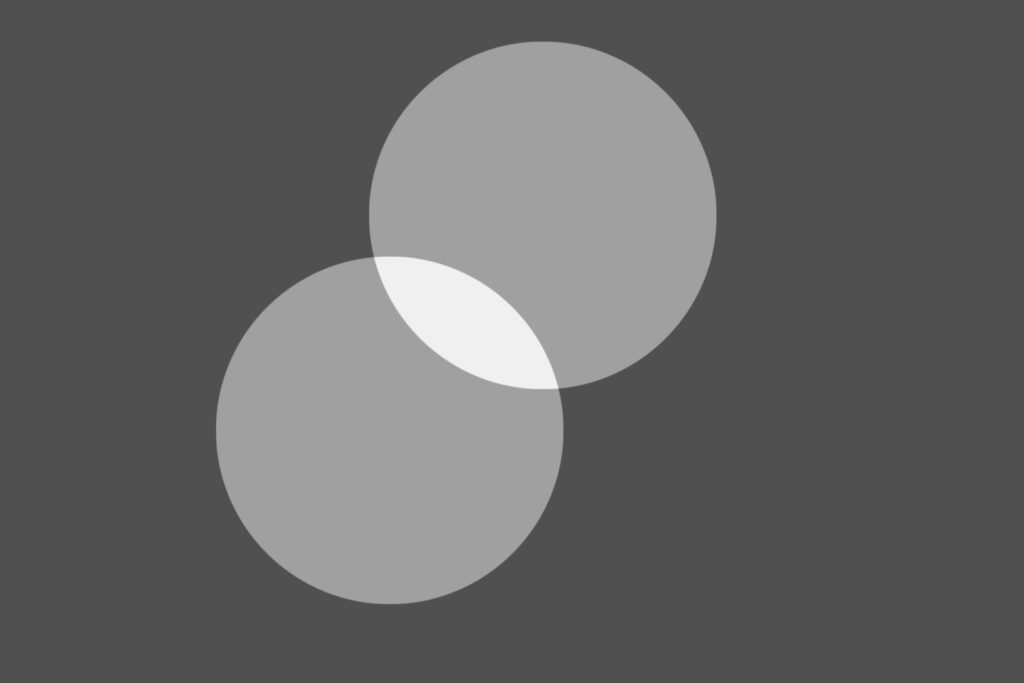
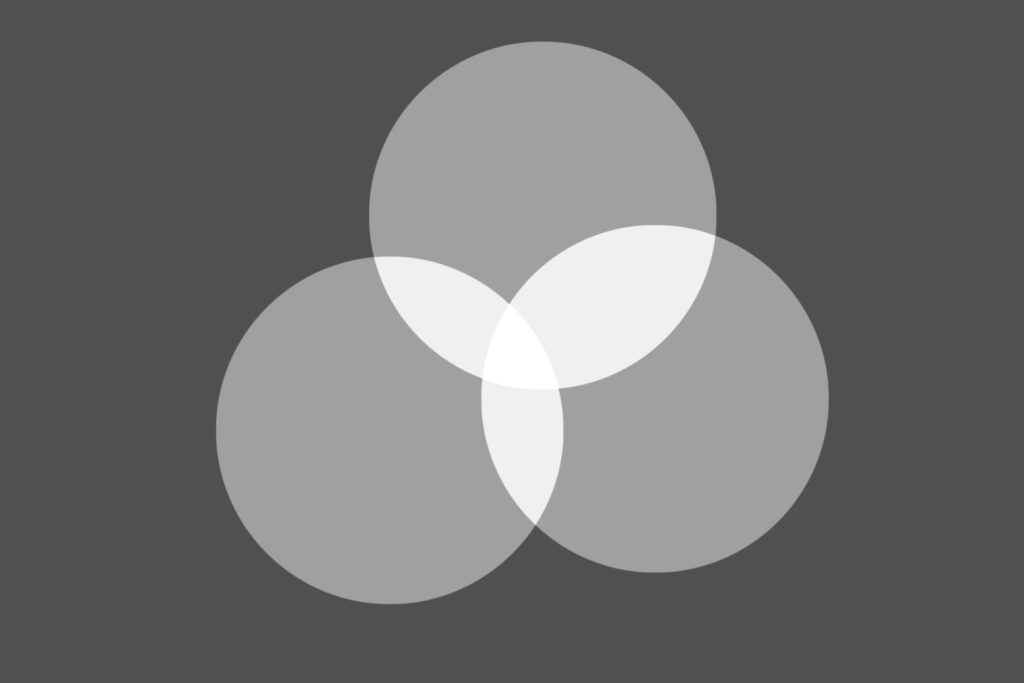


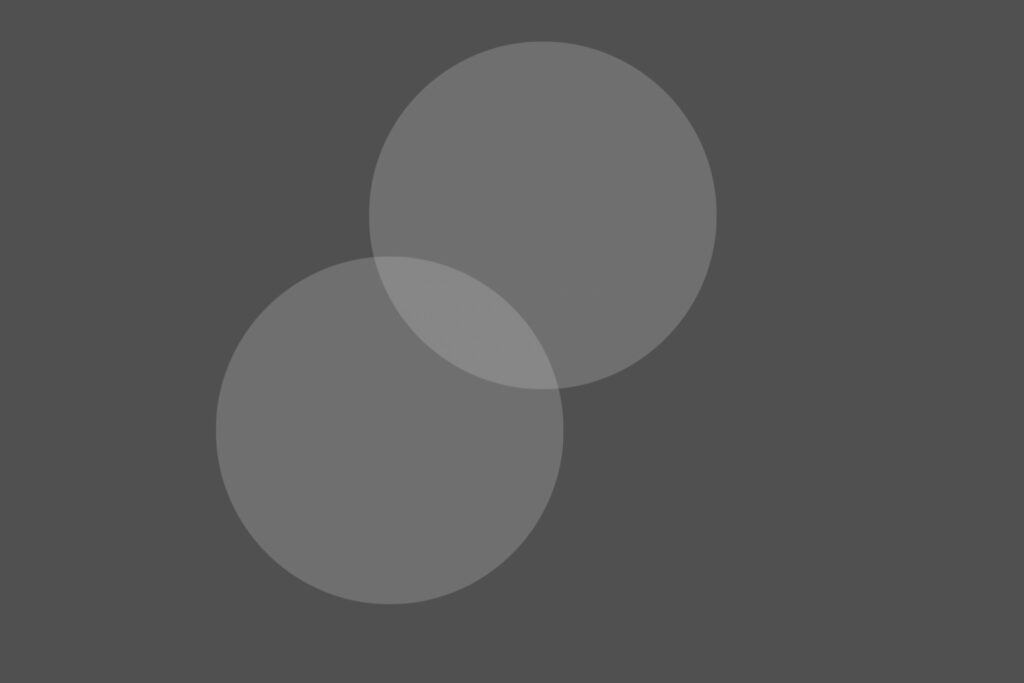
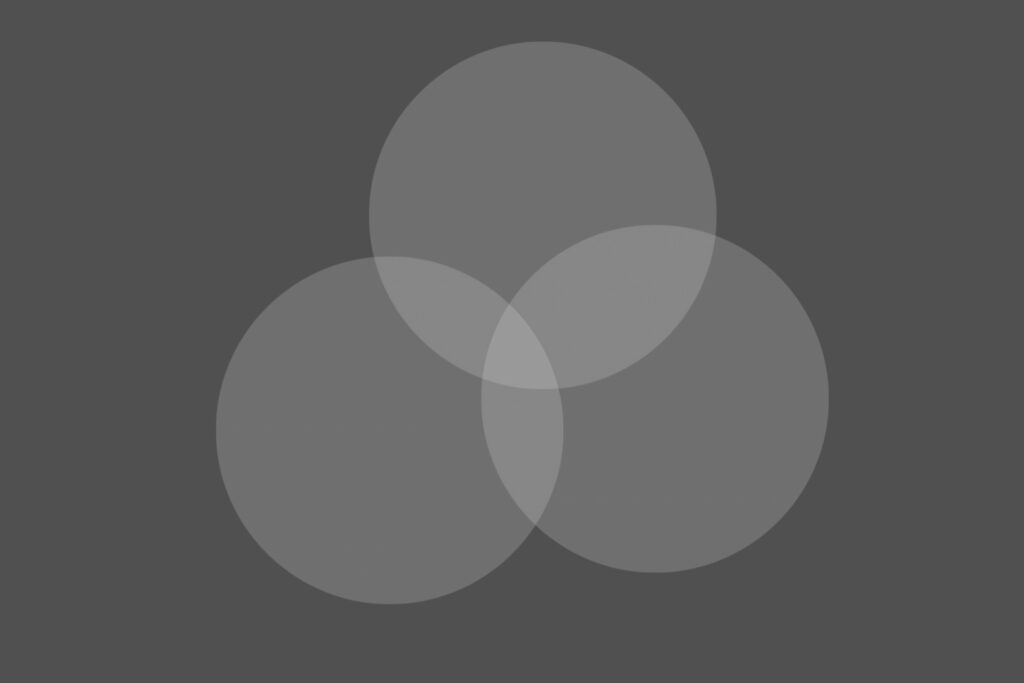
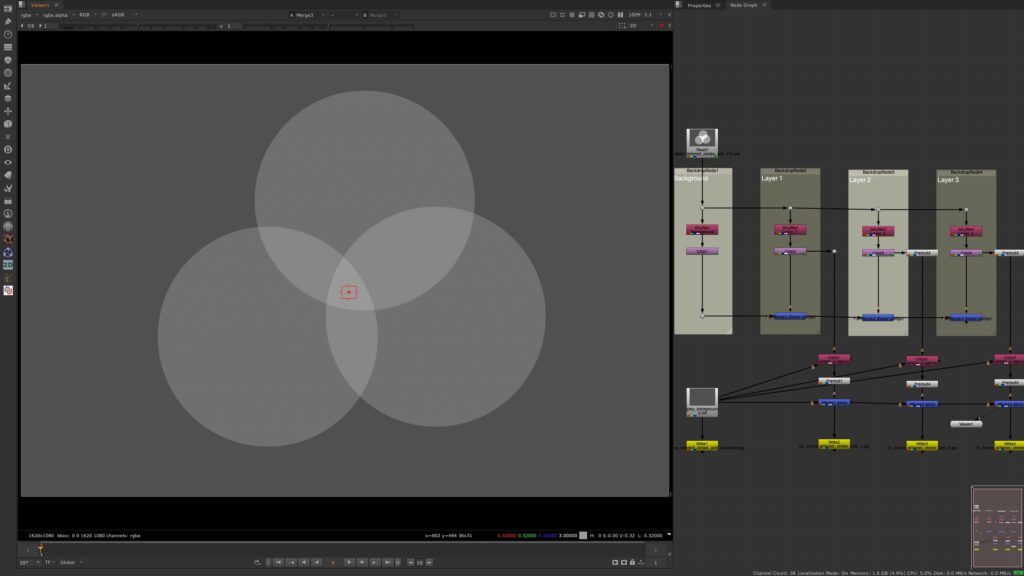
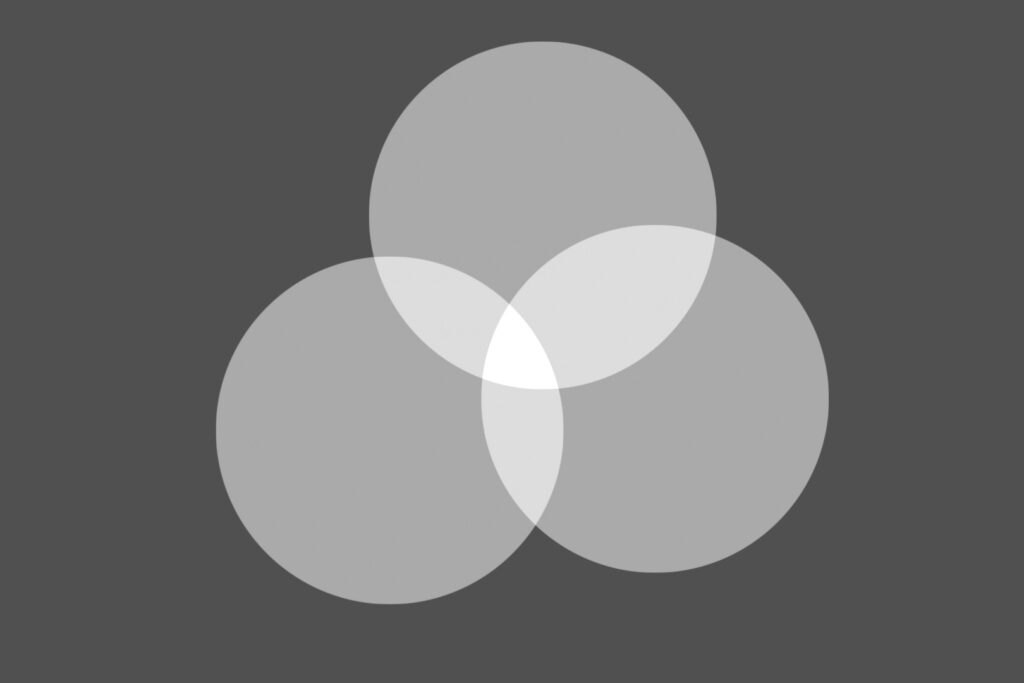

Now it’s clear that the Nuke result looks a lot more natural than the Affinity Photo result. Both programs add the color values right, just one does it before the sRGB view transform is applied and the other afterwards.
Switching from sRGB to modern view transforms like Filmic or ACES
A lot of programs and applications use the standard sRGB view transform, but in times of UHD and HDR TV screens there is a shift to more modern image processing pipelines.
Blender for example switched to the “Filmic View Transform” already before the big release 2.80 and is also compatible via OCIO to the ACES color management.
The look of light cones shining on a wall will change with the chosen view transform.
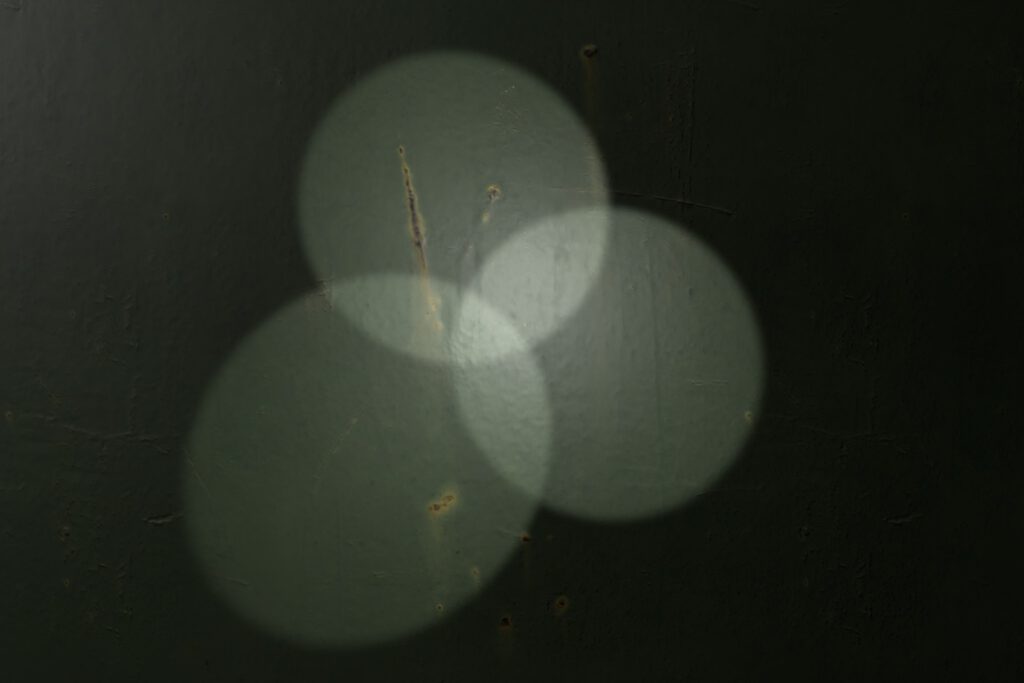
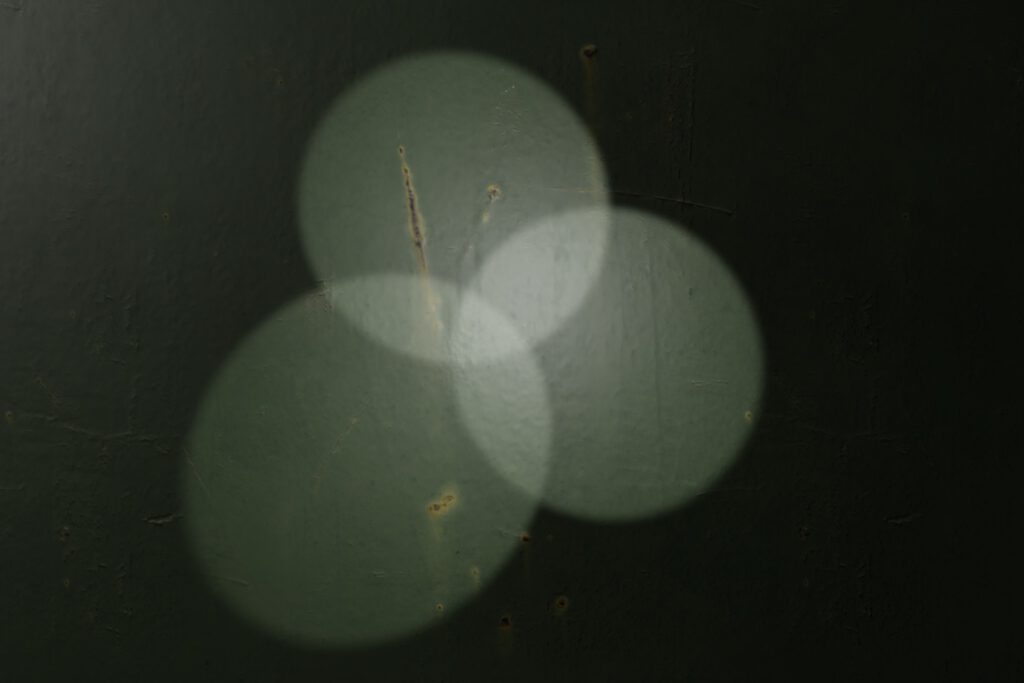
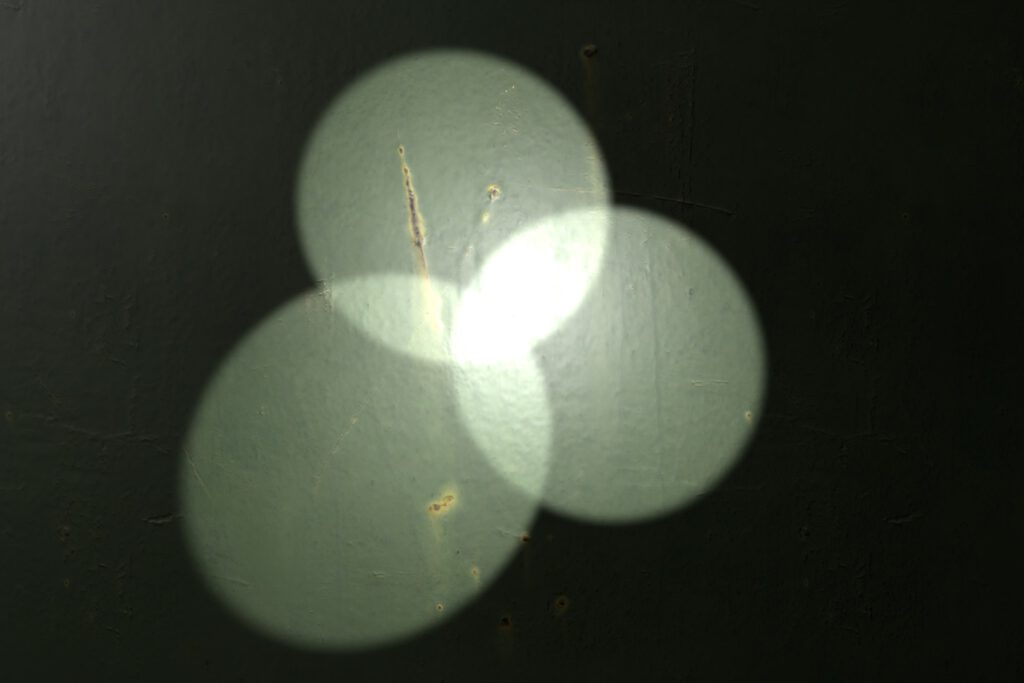
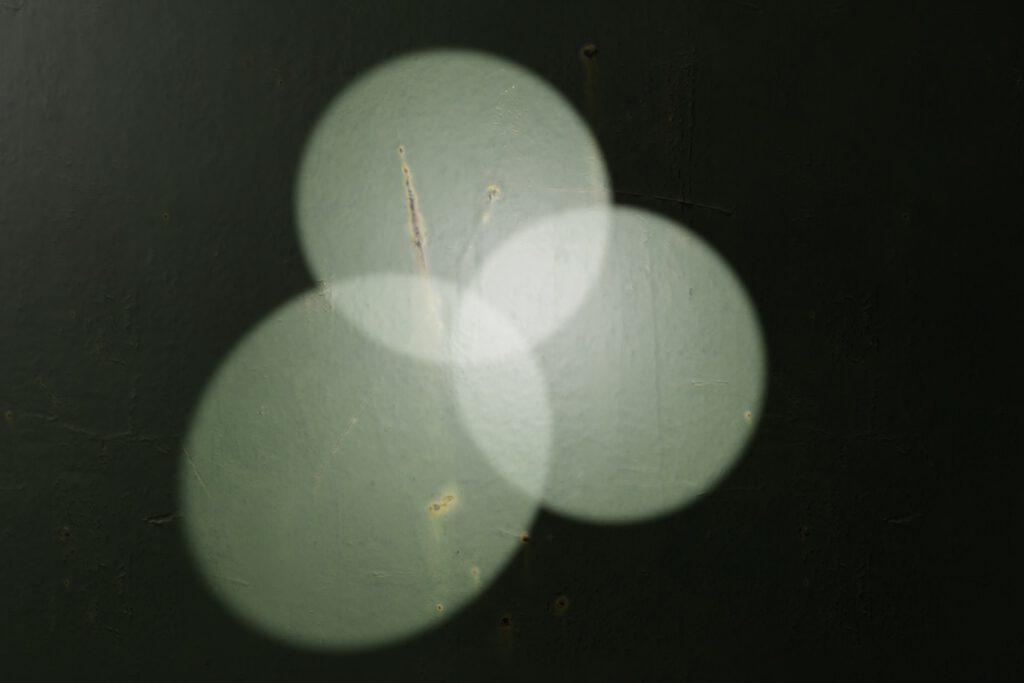
As the standard sRGB view transform clips at 1.0 (but not the rendering of course) and Filmic has a soft roll off the highlights similar to analog film stocks and more, the difference becomes more apparent when there is more light in the scene – the three spotlights are now 4 times brighter as before.